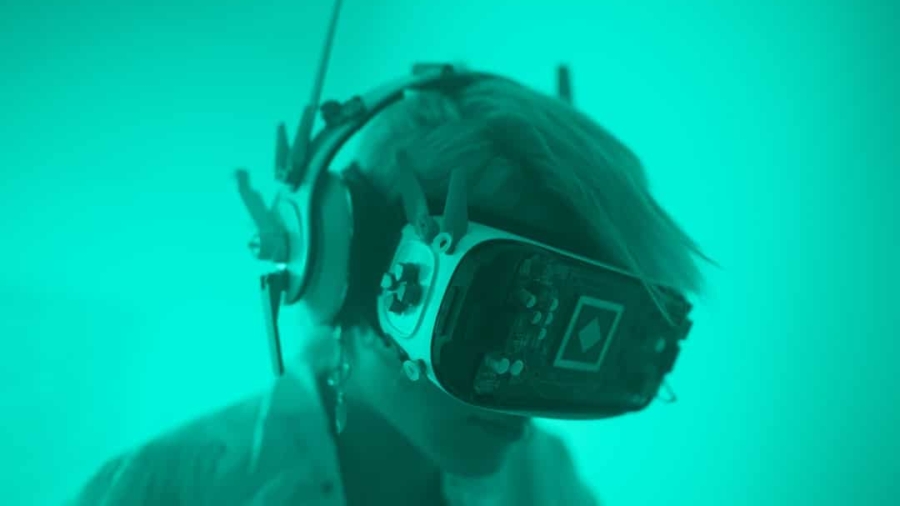Non-fungible tokens (NFTs) have emerged as a revolutionary force within the metaverse economy, fundamentally altering how digital assets are perceived, owned, and traded. Unlike cryptocurrencies such as Bitcoin or Ethereum, which are fungible and can be exchanged on a one-to-one basis, NFTs are unique digital tokens that represent ownership of a specific item or piece of content. This uniqueness is what makes NFTs particularly valuable in the context of the metaverse, where digital assets can range from virtual real estate to digital art and collectibles.
The metaverse itself is an expansive digital universe where users can interact, socialize, and conduct business in immersive environments, often facilitated by virtual reality (VR) and augmented reality (AR) technologies. The integration of NFTs into the metaverse economy allows for a new paradigm of ownership and value creation. In this digital landscape, users can buy, sell, and trade NFTs, creating a vibrant marketplace that mirrors traditional economies.
The ability to prove ownership through blockchain technology ensures that transactions are secure and transparent, fostering trust among participants. As more individuals and businesses recognize the potential of NFTs, the metaverse economy continues to expand, attracting artists, gamers, and entrepreneurs eager to explore new avenues for creativity and commerce.
Key Takeaways
- NFTs are unique digital assets that represent ownership of a specific item or piece of content in the metaverse economy.
- NFTs have a significant impact on virtual real estate, allowing for the ownership and trading of virtual land and properties within the metaverse.
- NFTs serve as a tool for digital identity and ownership, providing a secure and transparent way to verify ownership of digital assets.
- NFTs play a crucial role in the virtual goods and services market, enabling the creation, ownership, and trading of virtual items and experiences.
- NFTs are shaping the future of virtual art and collectibles, revolutionizing the way digital art is created, owned, and traded in the metaverse.
The Impact of NFTs on Virtual Real Estate
Virtual real estate has become one of the most intriguing applications of NFTs within the metaverse. Platforms like Decentraland and The Sandbox allow users to purchase parcels of virtual land as NFTs, enabling them to build, develop, and monetize their digital properties. This trend has led to a surge in interest from investors and developers who see the potential for significant returns in this burgeoning market.
For instance, in 2021, a virtual plot of land in Decentraland sold for over $2.4 million, highlighting the immense value that can be attributed to digital real estate. The implications of NFT-based virtual real estate extend beyond mere speculation; they also foster creativity and innovation. Owners of virtual land can create immersive experiences, host events, or establish businesses that cater to the metaverse’s diverse user base.
This has led to the emergence of virtual galleries, concert venues, and even theme parks, all built on NFT ownership. As more users flock to these platforms, the demand for virtual real estate is likely to increase, further driving up prices and encouraging more sophisticated developments.
NFTs as a Tool for Digital Identity and Ownership

In an increasingly digital world, NFTs serve as powerful tools for establishing digital identity and ownership.
This is particularly significant in social platforms where users can curate their identities through avatars, clothing, and accessories—all represented as NFTs.
For example, a user might own a unique outfit designed by a renowned digital artist, which not only enhances their avatar’s appearance but also signifies their status within the community. Moreover, NFTs can facilitate the creation of decentralized identities (DIDs), which empower users to control their personal data without relying on centralized authorities. This shift towards self-sovereignty is crucial in a landscape where privacy concerns are paramount.
By utilizing NFTs as identifiers, individuals can engage with various platforms while maintaining control over their information. This capability not only enhances user experience but also fosters trust among participants in the metaverse economy.
The Role of NFTs in Virtual Goods and Services
The proliferation of NFTs has transformed the landscape of virtual goods and services within the metaverse. Digital items such as clothing for avatars, virtual pets, or even unique weapons in gaming environments can now be tokenized as NFTs, allowing for true ownership and transferability. This shift has led to a thriving marketplace where users can buy and sell these items with ease.
For instance, platforms like OpenSea have become popular hubs for trading virtual goods, enabling creators to monetize their work while providing consumers with access to exclusive items. Additionally, NFTs have opened up new avenues for service-based offerings in the metaverse. Artists can host virtual concerts where tickets are sold as NFTs, granting attendees exclusive access to performances or meet-and-greet opportunities with the artists.
Similarly, educators can create courses or workshops that are accessible only through NFT ownership. This model not only incentivizes creators but also enhances user engagement by providing unique experiences that cannot be replicated elsewhere.
NFTs and the Future of Virtual Art and Collectibles
The art world has been significantly impacted by the rise of NFTs, with many artists embracing this technology to reach new audiences and monetize their work. Digital art can now be sold as limited-edition pieces or one-of-a-kind creations through NFT marketplaces. This has democratized access to art ownership, allowing collectors to invest in works from emerging artists who may not have had opportunities in traditional galleries.
For example, Beeple’s “Everydays: The First 5000 Days,” which sold for $69 million at auction, exemplifies how NFTs have disrupted conventional art sales. Moreover, NFTs have introduced innovative ways for artists to engage with their audience. Artists can embed royalties into their NFT contracts, ensuring they receive a percentage of future sales whenever their work changes hands.
This model not only provides ongoing revenue streams but also fosters a sense of community among collectors who feel more connected to the artists they support. As the market for digital art continues to grow, it is likely that we will see even more experimentation with NFT technology, leading to new forms of artistic expression.
NFTs and the Potential for Virtual Currency

The integration of NFTs into the metaverse economy raises intriguing possibilities for virtual currencies. While cryptocurrencies like Bitcoin serve as mediums of exchange within digital ecosystems, NFTs can represent unique assets that hold intrinsic value. This duality creates opportunities for new economic models where NFTs could be used as collateral for loans or even as currency in specific contexts.
For instance, a user might leverage their NFT collection to secure financing for a virtual business venture or trade them for services within a particular platform. Furthermore, some projects are exploring the concept of “NFT-backed currencies,” where the value of a currency is tied to a basket of NFTs rather than traditional fiat currencies or commodities. This approach could lead to more stable virtual economies that are less susceptible to market volatility.
As developers continue to innovate in this space, we may witness the emergence of entirely new financial systems built around NFT technology.
NFTs and the Evolution of Virtual Gaming
The gaming industry has been one of the most enthusiastic adopters of NFTs, fundamentally changing how players interact with games and each other. Traditionally, players invest time and money into games without any real ownership over their in-game assets; however, with NFTs, players can truly own their characters, skins, weapons, and other items. This shift allows players to trade or sell their assets outside of the game environment on various marketplaces.
Games like Axie Infinity have demonstrated this model’s success by allowing players to earn real income through gameplay by breeding and trading unique creatures represented as NFTs. Moreover, NFTs enable developers to create more engaging gaming experiences by incorporating play-to-earn mechanics that reward players for their time and effort. This model not only incentivizes participation but also fosters community engagement as players collaborate or compete for valuable assets.
As gaming continues to evolve within the metaverse framework, we can expect further innovations that leverage NFT technology to enhance gameplay and player interaction.
NFTs and the Challenges of Regulation and Security in the Metaverse Economy
Despite the promising potential of NFTs within the metaverse economy, several challenges related to regulation and security must be addressed. The rapid growth of this market has outpaced existing regulatory frameworks, leading to uncertainty regarding intellectual property rights, taxation, and consumer protection. For instance, questions arise about how copyright laws apply to digital art sold as NFTs or how transactions should be taxed when they occur across international borders.
As governments grapple with these issues, there is a pressing need for clear guidelines that protect both creators and consumers while fostering innovation. Security is another critical concern in the NFT space. High-profile hacks and scams have raised alarms about the safety of digital wallets and marketplaces where NFTs are traded.
Users must navigate complex security measures to protect their assets from theft or fraud. Additionally, the environmental impact of blockchain technology used in minting NFTs has sparked debates about sustainability within this burgeoning economy. Addressing these challenges will require collaboration among stakeholders—including developers, regulators, and users—to create a secure and equitable metaverse economy that benefits all participants while minimizing risks associated with this transformative technology.
A related article that delves into this topic is Best Free Drawing Software for Digital Artists in 2023, which highlights various software options that can enhance the creative process for artists looking to produce unique digital art for the metaverse.
FAQs
What are NFTs?
NFTs, or non-fungible tokens, are unique digital assets that represent ownership or proof of authenticity of a specific item or piece of content, such as artwork, music, videos, and other digital files.
What is the Metaverse Economy?
The Metaverse Economy refers to the virtual, interconnected space where digital assets, virtual goods, and services are bought, sold, and traded using digital currencies. It encompasses various virtual worlds, online games, and social platforms.
How do NFTs contribute to the Metaverse Economy?
NFTs contribute to the Metaverse Economy by enabling the ownership and trade of unique digital assets within virtual environments. They provide a way for users to buy, sell, and collect digital items, creating new opportunities for creators and businesses within the Metaverse.
What role do NFTs play in the development of the Metaverse?
NFTs play a significant role in the development of the Metaverse by providing a framework for digital ownership and scarcity within virtual environments. They enable the creation and exchange of unique virtual assets, fostering a thriving digital economy within the Metaverse.
Are there any challenges or concerns associated with NFTs in the Metaverse Economy?
Some challenges and concerns associated with NFTs in the Metaverse Economy include issues related to copyright infringement, environmental impact due to energy consumption, and the potential for fraud and scams within the NFT market. Additionally, questions about the long-term value and sustainability of NFTs in the Metaverse are also being raised.

